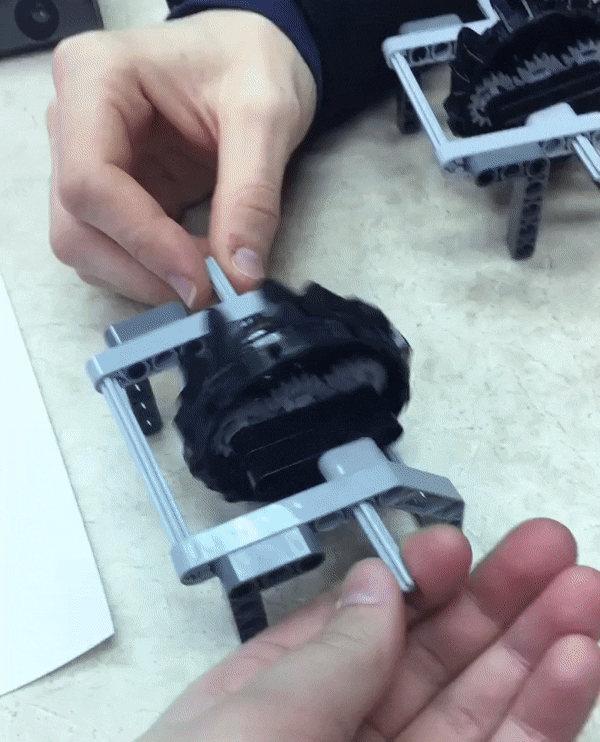
Self-Evaluation
Strengths:
My strengths include my organizational and planning skills. They lent well to this project because there was a large amount of work to do in a short amount of time. My creativity, drawing, and computer aided design skills also lend well to this project. I am able to convey my ideas and interpret my group members' ideas through drawings and quick CAD models.
Opportunities:
While this project gave me more confidence in my fabrication abilities because of the amount of parts I needed to 3-D print, laser cut, and assemble, I would like to continue to improving in this area.
Course Material Reflection
Kinematic Fundamentals:
Kinematic fundamentals were learned through practice problems. Since many students come in knowing kinematic basics, it is fun to apply them to topics such as degrees of freedom, Gruebler's equation to compute the degrees of freedom, and the Grashof condition to determine the class of mechanisms based on link lengths. The kinematic fundamentals were best applied to these methods by analyzing existing linkage systems in the world.
Graphical Linkage Synthesis:
Graphical linkage synthesis was best learned by using the online resources available to create curves based on four bar linkages. This was helpful because the change in the outputs could be observed by changing the link lengths. The book notes used in office hours were helpful to do graphical linkage synthesis beyond a four bar linkage.
Position-Velocity-Acceleration Analysis:
Position-Velocity-Acceleration Analysis was enjoyable to learn because of the many derivatives and Euler's equations to get the answers. It was math intensive and based on the organization of the real and imaginary parts of each position, velocity, and acceleration equation. I learned this best through practice problems and enjoyed using Matlab code to produce a visual and graphical representation of the material.
Cam Design:
Cam design was fun to learn because of the many different outputs possible in a mechanism when using cams. I learned this the best by doing practice problems and following along to the in class examples.
Gear Trains:
I learned about why certain gears can mesh together and why others can not. I learned the importance of choosing gears with the same pitch and how to choose diameter to speed up or slow down the outputs from the gear train. I learned this best from conducting example problems and using Lego gears during office hours.
Dynamic Force Analysis:
My Dynamic force analysis was best learned during the labs where I could see the outputs in Matlab. Setting up the equations by hand lent well to a basic understanding but the applications were best seen in Matlab during labs and while analyzing our projects.
Overall Course Reflection
Course Highlights:
Course highlights for me included working with a team to solve a problem and practicing our design and fabrication skills. I also enjoyed all the material we learned to design a mechanism with an intended output. Professor Liebenberg was patient and great to work with when questions arose along the way.
Course Challenges:
Mechanical Design I is a course packed with work. Organizing and prioritizing between labs, the project, homework, and quizzes could be tough at times, but all facets of the course helped students learn the material inside and out. The labs were Matlab intensive which was challenging at first, but produced a rewarding output.
Real Life Applications:
All of the material learned has real life applications. Topics i have used this semester outside of the classroom include gear train design for an Engineering Open House Suturing Gun project and degrees of freedom for analyzing the world around me.

Engineering Open House Suturing Gun Animation
*CAD created by Lucas Lasher and myself, GIF Created By: https://ezgif.com/video-to-gif

Lego Gears during Office Hours
*GIF Created By: https://ezgif.com/video-to-gif